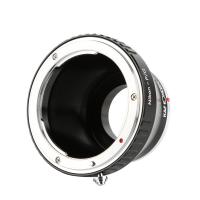What Is The Microscope ?
A microscope is an instrument used to magnify and observe small objects or organisms that are not visible to the naked eye. It works by using lenses to bend and focus light, allowing the user to see details that would otherwise be too small to see. Microscopes are commonly used in scientific research, medical diagnosis, and education. There are several types of microscopes, including compound microscopes, which use multiple lenses to magnify the image, and electron microscopes, which use beams of electrons to create an image. Microscopes have played a crucial role in advancing our understanding of the natural world and have led to many important scientific discoveries.
1、 Optical microscope
The optical microscope is a scientific instrument that uses visible light and lenses to magnify small objects. It is one of the most widely used tools in biology, medicine, and materials science. The basic design of an optical microscope consists of an objective lens, an eyepiece, and a light source. The objective lens is used to magnify the specimen, while the eyepiece is used to view the magnified image. The light source illuminates the specimen, making it visible to the observer.
In recent years, there have been significant advancements in optical microscopy technology. One of the most notable developments is the use of fluorescence microscopy, which allows scientists to visualize specific molecules or structures within a cell. This technique involves labeling the target molecule with a fluorescent dye, which emits light when excited by a specific wavelength of light. This allows researchers to track the movement and behavior of specific molecules in real-time.
Another recent development in optical microscopy is the use of super-resolution microscopy. This technique allows scientists to visualize structures that are smaller than the diffraction limit of light. Super-resolution microscopy uses various methods to overcome the diffraction limit, such as structured illumination, stimulated emission depletion, and single-molecule localization.
Overall, the optical microscope remains an essential tool in scientific research, and its continued development and improvement will undoubtedly lead to new discoveries and advancements in various fields.

2、 Electron microscope
The electron microscope is a powerful tool used in scientific research to observe and study the structure of materials and biological specimens at a very high resolution. It uses a beam of electrons instead of light to magnify the sample, allowing for much greater detail to be seen. The first electron microscope was developed in the 1930s, and since then, it has become an essential tool in many fields of science, including biology, materials science, and nanotechnology.
There are two main types of electron microscopes: transmission electron microscopes (TEM) and scanning electron microscopes (SEM). TEMs use a thin sample that is placed on a grid and then bombarded with electrons. The electrons pass through the sample, and the resulting image is projected onto a screen or camera. SEMs, on the other hand, scan the surface of the sample with a beam of electrons, creating a 3D image of the surface.
In recent years, advances in electron microscopy have allowed for even greater resolution and imaging capabilities. Cryo-electron microscopy, for example, allows for the study of biological samples in their natural, hydrated state, providing a more accurate representation of their structure. Additionally, aberration-corrected electron microscopy has improved the resolution of electron microscopes, allowing for the observation of individual atoms and molecules.
Overall, the electron microscope has revolutionized the way scientists study the world around us, providing unprecedented detail and insight into the structure and function of materials and biological specimens.

3、 Scanning probe microscope
Scanning probe microscope (SPM) is a type of microscope that uses a physical probe to scan the surface of a sample to create an image with high resolution. The probe is usually a sharp tip that is moved across the surface of the sample, and the interaction between the tip and the sample is measured to create an image. SPMs are used in a variety of fields, including materials science, biology, and nanotechnology.
The latest point of view on SPMs is that they have revolutionized the field of nanotechnology by allowing scientists to study and manipulate materials at the atomic and molecular level. SPMs have been used to create new materials with unique properties, such as superconductors and nanowires, and to study the behavior of biological molecules, such as proteins and DNA.
One of the most important types of SPM is the atomic force microscope (AFM), which uses a cantilever with a sharp tip to scan the surface of a sample. The tip is moved up and down by a piezoelectric device, and the deflection of the cantilever is measured to create an image. AFMs can be used to measure the mechanical properties of materials, such as stiffness and adhesion, and to manipulate individual atoms and molecules.
Overall, SPMs are powerful tools for studying the properties of materials at the nanoscale, and they have led to many important discoveries in fields such as materials science, biology, and nanotechnology.

4、 Confocal microscope
The confocal microscope is a type of microscope that uses a laser beam to scan a sample and create a three-dimensional image. It is a powerful tool for studying biological samples, as it allows researchers to visualize the internal structures of cells and tissues with high resolution and clarity.
One of the key advantages of the confocal microscope is its ability to eliminate out-of-focus light, which can blur images and reduce contrast. This is achieved through the use of a pinhole aperture, which blocks light from above and below the focal plane of the sample. As a result, only light from the focal plane is detected, leading to sharper and more detailed images.
In recent years, advances in confocal microscopy have led to the development of new techniques and applications. For example, researchers have used confocal microscopy to study the dynamics of cellular processes, such as protein trafficking and signaling pathways. They have also used it to investigate the structure and function of complex tissues, such as the brain and the heart.
Overall, the confocal microscope is a valuable tool for biological research, offering high-resolution imaging and the ability to study complex biological systems in three dimensions. As technology continues to advance, it is likely that new applications and techniques will emerge, further expanding the capabilities of this powerful tool.







































